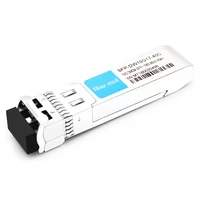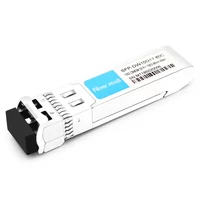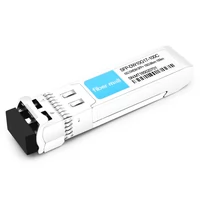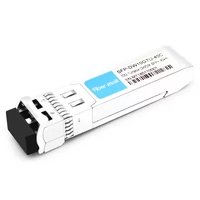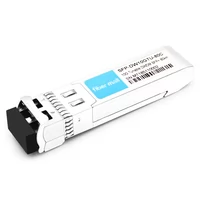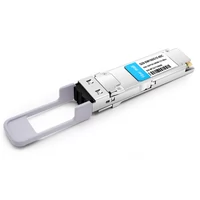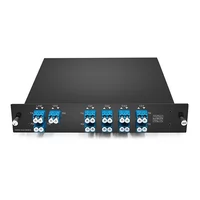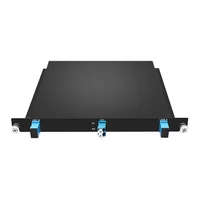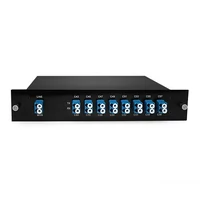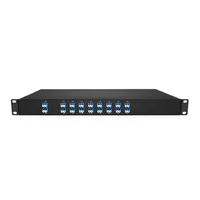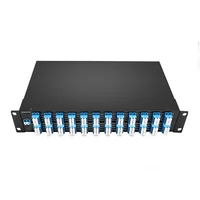SONET, SDH, and DWDM are key technologies utilized in the field of optical fiber communications. They play crucial roles in providing high capacity, efficiency, and reliability, albeit with some distinctions in their design and applications.
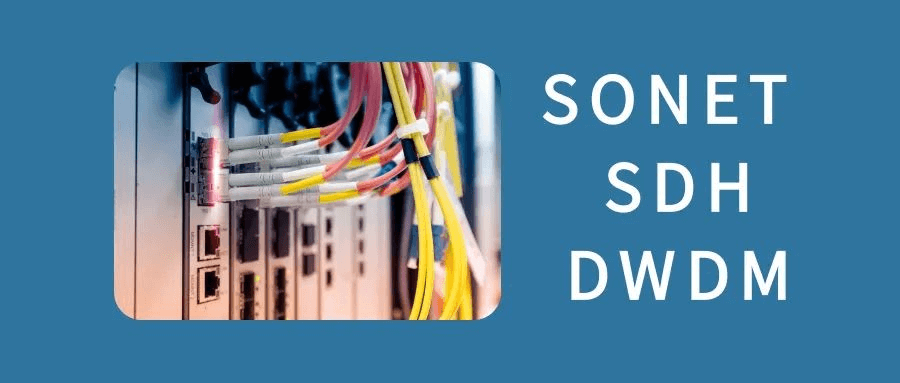
Table of Contents
ToggleSONET (Synchronous Optical Network)
SONET is a widely adopted synchronous optical network standard in North America, designed to support various data transmission services. It offers a mechanism for synchronously transmitting data streams of different rates over fiber optics, effectively facilitating the transmission of voice, data, and video.
SONET rate levels:
- OC-3: 155.52 Mbps
- OC-12: 622.08 Mbps
- OC-48: 2.488 Gbps
SONET finds extensive applications in traditional telephone networks, and enterprise communications, among others. Its synchronicity and high reliability make it suitable for applications with stringent requirements for latency and availability.
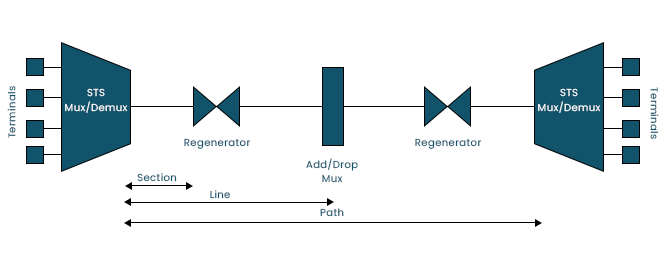
Time Slot Structure
SONET employs a specific time slot structure comprising two levels: Synchronous Transport (ST) and Virtual Tributary (VT). The ST layer is used for overall bandwidth allocation, while the VT layer is utilized for finer bandwidth allocation.
SONET time slot structure:
- STS-1: 51.84 Mbps
- VT1.5: 1.728 Mbps
- VT2: 2.304 Mbps
Fiber Optic Transmission
SONET utilizes fiber optics for data transmission, with the wavelength range of light falling between 1310 nm and 1550 nm. This mode of transmission enables SONET to excel in long-distance communications.
Characteristics:
- Wavelength Range: 1310 nm to 1550 nm
- Suitable for long-distance communication
Key Features
Synchronicity: SONET employs a synchronous clock mechanism to ensure data is transmitted synchronously within the network, enhancing temporal integrity.
Rate Levels: SONET defines a series of speed levels such as OC-3, OC-12, and OC-48, catering to various bandwidth requirements.
SDH (Synchronous Digital Hierarchy)
SDH serves as the international equivalent standard to SONET, aimed at promoting interoperability among global communication equipment. Similar to SONET, SDH provides a mechanism for synchronous transmission and supports multiple data services.
SDH rate levels:
- STM-1: 155.52 Mbps
- STM-4: 622.08 Mbps
- STM-16: 2.488 Gbps
SDH finds widespread application in international communications, particularly playing a crucial role in transnational networks. Its compatibility and robust fault tolerance make it a cornerstone of global communication networks.
STM (Synchronous Transport Module)
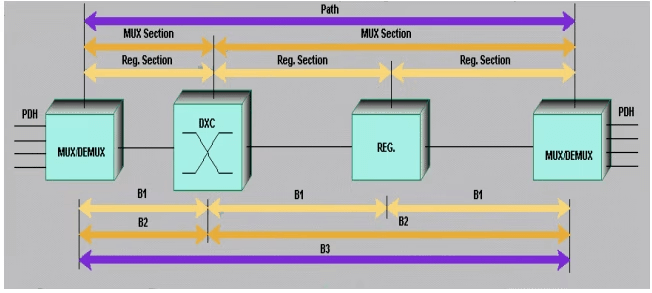
Similar to SONET’s structure, SDH employs the STM (Synchronous Transport Module) hierarchical structure. However, SDH uses designations like STM-1, and STM-4 to represent different speed levels, equivalent to SONET’s optical rates OC.
Example SDH STM hierarchical structure:
- STM-1: 155.52 Mbps
- STM-4: 622.08 Mbps
- STM-16: 2.488 Gbps
Fault Tolerance
Synchronous Digital Hierarchy (SDH) exhibits robust fault tolerance, enabling rapid fault detection and recovery within networks, thereby enhancing system stability and reliability.
Key features of SDH fault tolerance include:
- Swift fault detection and recovery
- Enhanced system reliability
Noteworthy aspects:
- International Standard: SDH adheres to standards set by the International Telecommunication Union (ITU), fostering global uniformity and interoperability of communication equipment.
- Compatibility: SDH can interoperate with Synchronous Optical Networking (SONET), ensuring consistency in international communications.
Distinguishing between SONET and SDH:
Standardization Organizations:
SONET was developed by the American National Standards Institute (ANSI) primarily for use in the United States.
SDH was established by the ITU Telecommunication Standardization Sector (ITU-T) and is utilized globally.
Basic Units:
The fundamental unit of SDH is the Synchronous Transport Module level-1 (STM-1).
SONET’s basic unit is Optical Carrier level 1 (OC-1).
Transmission Overhead:
SONET has a total transmission overhead of 27 bytes.
SDH has a total transmission overhead of 81 bytes.
Transmission Rates:
Due to the absence of higher-order multiplexing for signal transmission, SONET operates at lower transmission rates than SDH.
Transmission Modes:
SONET is limited to synchronous data transmission only, while SDH supports both synchronous and asynchronous data transmission.
DWDM (Dense Wavelength Division Multiplexing)
Dense Wavelength Division Multiplexing (DWDM) is a technology that utilizes different wavelengths to transmit multiple signals over optical fibers, effectively increasing fiber utilization and enabling high-capacity optical communication.
DWDM Wavelength Examples:
- Wavelength 1: 1550 nm
- Wavelength 2: 1560 nm
- Wavelength 3: 1570 nm
DWDM is primarily used in high-capacity optical communication networks, such as long-distance fiber transmission and data center interconnection. Its wavelength division multiplexing feature makes it suitable for scenarios requiring the handling of large data streams.
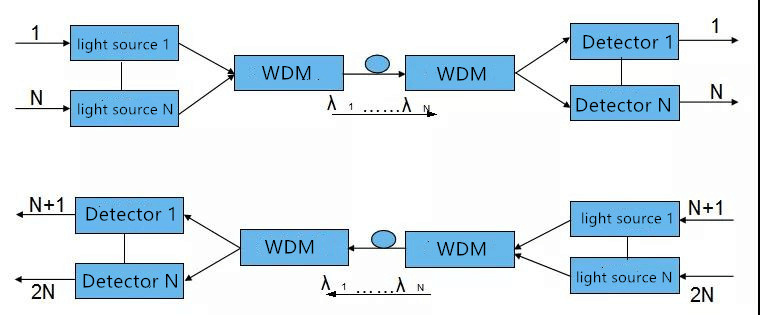
Wavelength Division Multiplexing
At the core of DWDM is wavelength division multiplexing, allowing multiple signals to be transmitted using different wavelengths. This design enhances fiber utilization, supporting greater data transmission capacity.
Characteristics:
- Transmission of multiple signals using different wavelengths
- Increased fiber utilization
Fiber Capacity Enhancement
DWDM technology enables capacity enhancement by adding wavelengths without replacing existing fiber infrastructure, thereby reducing upgrade costs.
Characteristics of DWDM Fiber Capacity Enhancement:
- Increased system capacity by adding wavelengths
- Reduced upgrade costs
Features
Wavelength Multiplexing: DWDM enables multiple wavelengths on the same optical fiber for data transmission, achieving multiplexing.
Fiber Utilization: DWDM effectively improves fiber utilization, allowing the transmission of large data streams over the same optical fiber.
Comparison of Advantages and Disadvantages
SONET
Advantages:
Highly synchronized transmission suitable for applications with stringent timing requirements.
Widely used in North America with a robust network infrastructure.
Disadvantages:
Relatively lower wavelength utilization limits its application in high-capacity transmissions.
SDH
Advantages:
International standard promoting interoperability of global communication equipment.
Strong fault tolerance enhances network stability.
Disadvantages:
May be less flexible than SONET for some networks in North America.
DWDM
Advantages:
Significant improvement in fiber utilization through wavelength division multiplexing.
Flexible system upgrades with fiber capacity enhancement.
Disadvantages:
Lower requirements for synchronization, potentially unsuitable for delay-sensitive applications.
Comparison between SONET/SDH and DWDM
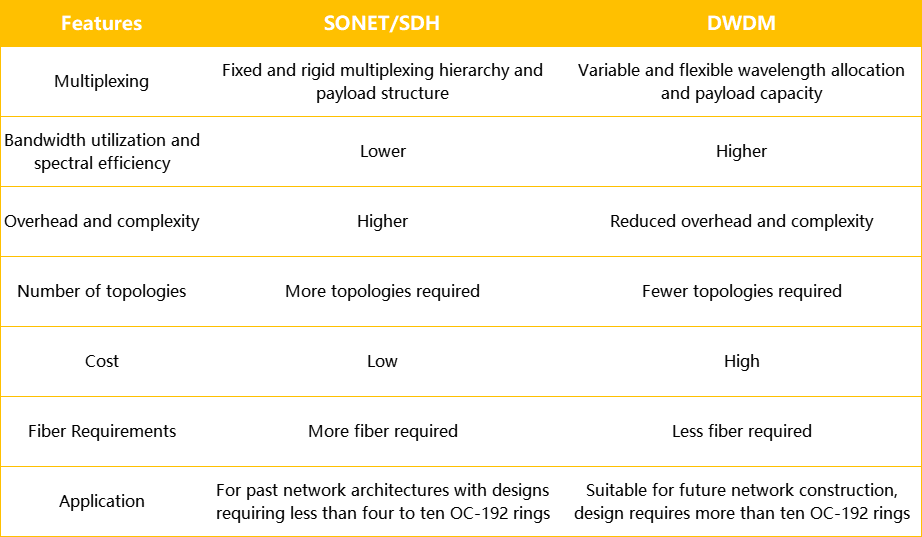
In conclusion, SONET, SDH, and DWDM are crucial technologies in the field of optical communication, each with unique characteristics and applications. Understanding their differences and strengths is essential for building efficient and reliable communication networks. As technology advances, these technologies will continue to evolve, providing stronger support for global communications.
Related Products:
-
 SFP-DW10G17-40C 10G DWDM SFP+ C17 100GHz 1563.86nm 40km LC SMF DDM Transceiver Module
$155.00
SFP-DW10G17-40C 10G DWDM SFP+ C17 100GHz 1563.86nm 40km LC SMF DDM Transceiver Module
$155.00
-
 SFP-DW10G17-80C 10G DWDM SFP+ C17 100GHz 1563.86nm 80km LC SMF DDM Transceiver Module
$175.00
SFP-DW10G17-80C 10G DWDM SFP+ C17 100GHz 1563.86nm 80km LC SMF DDM Transceiver Module
$175.00
-
 SFP-DW10G17-100C 10G DWDM SFP+ C17 100GHz 1563.86nm 100km LC SMF DDM Transceiver Module
$235.00
SFP-DW10G17-100C 10G DWDM SFP+ C17 100GHz 1563.86nm 100km LC SMF DDM Transceiver Module
$235.00
-
 SFP-DW10GTU-40C 10G DWDM Tunable SFP+ 50GHz 1529.55nm~1561.83nm 40km LC SMF DDM Transceiver Module
$550.00
SFP-DW10GTU-40C 10G DWDM Tunable SFP+ 50GHz 1529.55nm~1561.83nm 40km LC SMF DDM Transceiver Module
$550.00
-
 SFP-DW10GTU-80C 10G DWDM Tunable SFP+ 50GHz 1529.55nm~1561.83nm 80km LC SMF DDM Transceiver Module
$750.00
SFP-DW10GTU-80C 10G DWDM Tunable SFP+ 50GHz 1529.55nm~1561.83nm 80km LC SMF DDM Transceiver Module
$750.00
-
 Q28-2DW1314-80C 100G DWDM QSFP28 PAM4 80km C13 C14 100GHz CS DDM Optical Transceiver
$1600.00
Q28-2DW1314-80C 100G DWDM QSFP28 PAM4 80km C13 C14 100GHz CS DDM Optical Transceiver
$1600.00
-
 Q28-DW100G15-80C Compatible 100G DWDM QSFP28 PAM4 Single Wave C15 1565.50nm 100GHz LC 80km DDM Optical Transceiver Module
$1900.00
Q28-DW100G15-80C Compatible 100G DWDM QSFP28 PAM4 Single Wave C15 1565.50nm 100GHz LC 80km DDM Optical Transceiver Module
$1900.00
-
 SFP28-DW25GT-10E 25G Tunable DWDM SFP28 C-band 48 channels 10km Optical Transceiver Module
$500.00
SFP28-DW25GT-10E 25G Tunable DWDM SFP28 C-band 48 channels 10km Optical Transceiver Module
$500.00
-
 SFP28-DW25GT-15E 25G Tunable DWDM SFP28 C-band 48 channels 15km Optical Transceiver Module
$550.00
SFP28-DW25GT-15E 25G Tunable DWDM SFP28 C-band 48 channels 15km Optical Transceiver Module
$550.00
-
 SFP28-DW25G17-40C 25G SFP28 DWDM C17 100GHz ER 40KM 1563.86nm LC SMF DDM Transceiver Module
$750.00
SFP28-DW25G17-40C 25G SFP28 DWDM C17 100GHz ER 40KM 1563.86nm LC SMF DDM Transceiver Module
$750.00
-
 EDFA 40/80 Channels DWDM C-Band Optical Booster Amplifier Maximal Output Power +20dBm Gain 15dB Saturated Optical Power +5dBm
$1139.00
EDFA 40/80 Channels DWDM C-Band Optical Booster Amplifier Maximal Output Power +20dBm Gain 15dB Saturated Optical Power +5dBm
$1139.00
-
 DWDM MUX DEMUX 8CH (C21-C28) with Express Port LC/UPC Dual Fiber LGX BOX
$500.00
DWDM MUX DEMUX 8CH (C21-C28) with Express Port LC/UPC Dual Fiber LGX BOX
$500.00
-
 EDFA 40/80 Channels DWDM C-Band Optical Line Amplifier Maximal Output Power +16dBm Gain 25dB Saturated Optical Power -9dBm
$1139.00
EDFA 40/80 Channels DWDM C-Band Optical Line Amplifier Maximal Output Power +16dBm Gain 25dB Saturated Optical Power -9dBm
$1139.00
-
 Passive DWDM Single Fiber OADM Module 1 DWDM Wavelengths (100GHz Spacing) LGX BOX
$110.00
Passive DWDM Single Fiber OADM Module 1 DWDM Wavelengths (100GHz Spacing) LGX BOX
$110.00
-
 EDFA 40/80 Channels DWDM C-Band Optical Pre-Amplifier Maximal Output Power +16dBm Gain 25dB Saturated Optical Power -9dBm
$1139.00
EDFA 40/80 Channels DWDM C-Band Optical Pre-Amplifier Maximal Output Power +16dBm Gain 25dB Saturated Optical Power -9dBm
$1139.00
-
 DWDM MUX 8CH 16 Wavlengths (TX: C43/C45/C47/C49/C51/C53/C55/C57 RX: C44/C46/C48/C50/C52/C54/C56/C58) with MON Port LC/UPC Single Fiber LGX BOX
$450.00
DWDM MUX 8CH 16 Wavlengths (TX: C43/C45/C47/C49/C51/C53/C55/C57 RX: C44/C46/C48/C50/C52/C54/C56/C58) with MON Port LC/UPC Single Fiber LGX BOX
$450.00
-
 DWDM MUX DEMUX 16CH (C21-C36) with Monitor Port LC/UPC Dual Fiber 1U Rack
$800.00
DWDM MUX DEMUX 16CH (C21-C36) with Monitor Port LC/UPC Dual Fiber 1U Rack
$800.00
-
 DWDM MUX DEMUX 50GHZ 96CH (C15-C62) LC/UPC Dual Fiber 2U Rack
$6000.00
DWDM MUX DEMUX 50GHZ 96CH (C15-C62) LC/UPC Dual Fiber 2U Rack
$6000.00

